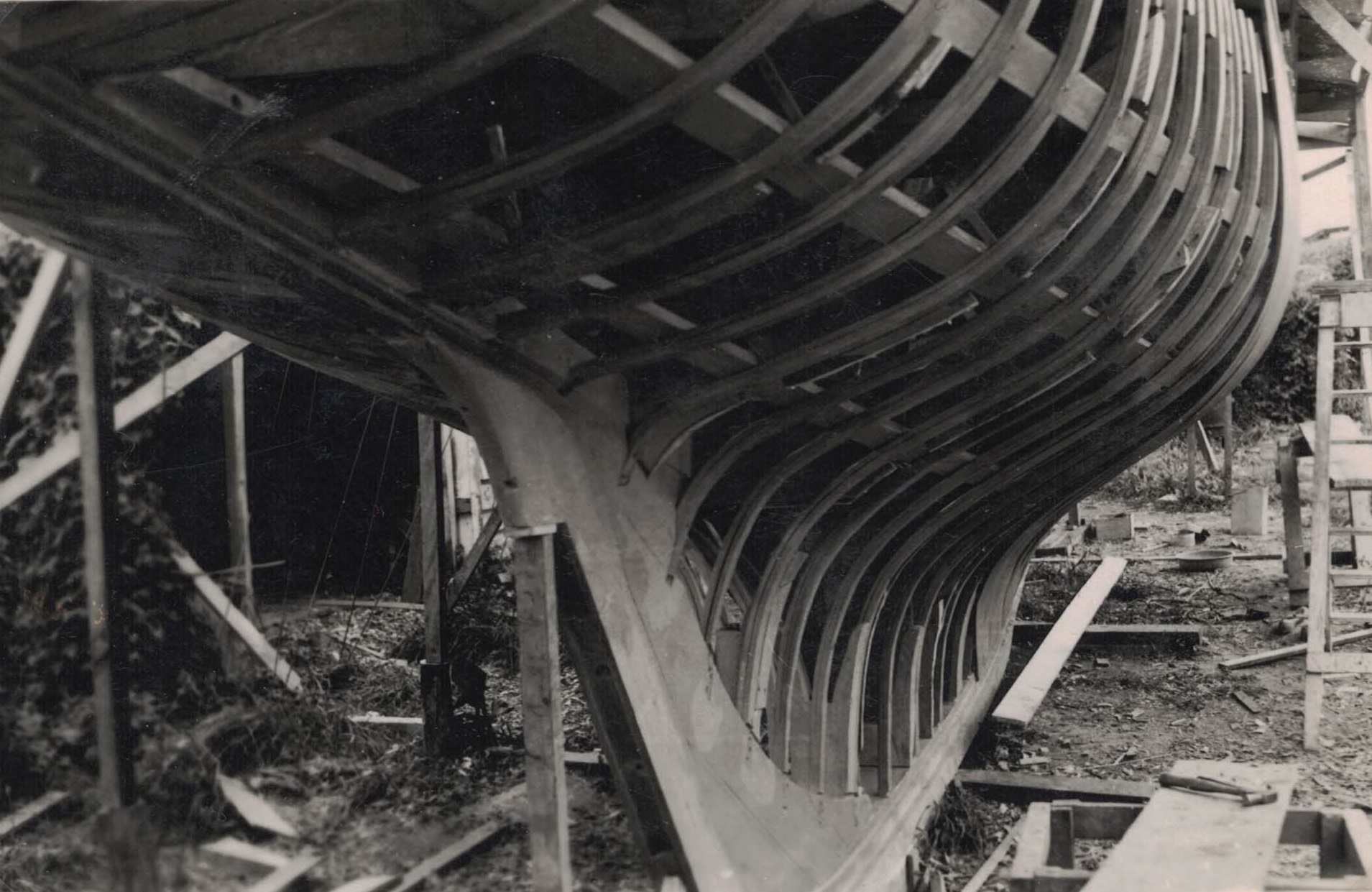I say “frames” another would say “ribs”. Boat nomenclature changes with location, decade and construction technique. To top it off, different spellings are used for the same word depending upon (mostly) whether it us U.S. or British. I’ve been working on British made or influenced items for most of my life and I realize that I use some of these interchangeably. A case in point would be that I always spell “gray” as “grey”. It confuses even myself.
Regardless of what we call them, a wooden vessel needs ribs. There are floor timbers, which do not support the cabin sole (floor) but instead tie the keel to the hull. But they do not run clear to the deck. This is the job of the frames. They provide support to the planking used to skin the hull and tie everything together.

Leda’s frames are made from Mangeao, which as near as I can tell, has never been heard of outside of New Zealand, and maybe doesn’t have another common name. It is however a member of the laurel family. If you want to read up on it you can visit this link. Frames are often steam bent. Heating with steam makes the wood pliable enough to be bent into shape. Leda has a pronounced wine-glass curve through her center section. In order to achieve this shape, her ribs were split part-way from each end, leaving the center intact in a section that did not require as much bending. The wood was steamed, bent into the hull and riveted with stout copper rivets at each stringer and at the clamp. The bases were set into the keel timber in chiseled out pockets. Eventually, the planking was also riveted through all the frames, completing the lamination effect of the split frame.


In the photo above you can more easily see the wine-glass curvature of Leda’s longest frames. Rivets are clearly visible through the stingers. The above mentioned floor timbers are also seen here.
Next: Planks, Planks a Lot
Previous: First Things First